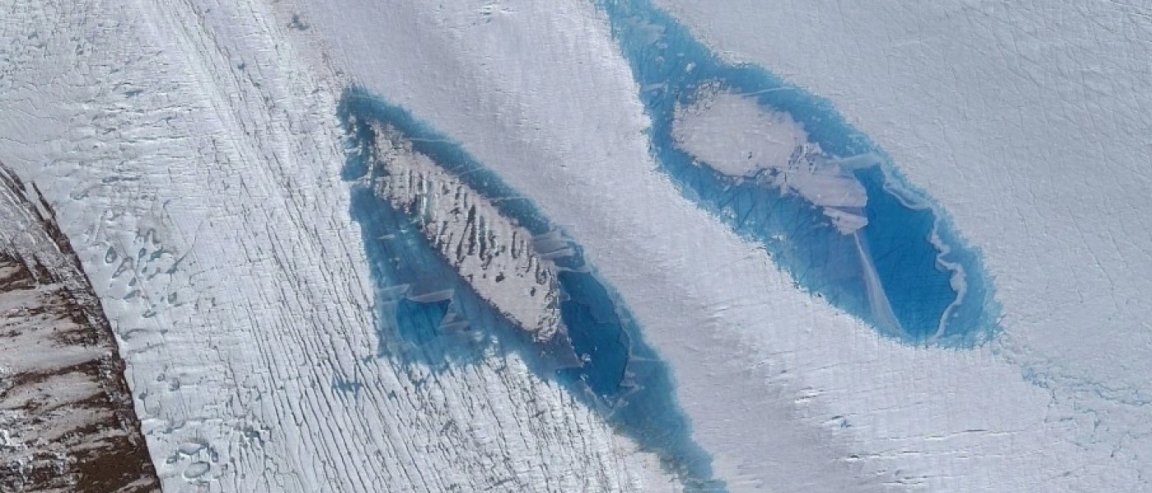
Supraglacial Lakes
Oftentimes, the sight of spectacularly blue water is enough to make anyone happy. Unfortunately, not in this case.
Scientists studying East Antarctica, the largest ice mass on Earth, have discovered blue lakes sprouting like summer blooms on the Langhovde Glacier, an outlet glacier located at the Soya Coast.
From 2000 through 2013, scientists have been using satellite imagery to study East Antarctica’s Dronning Maud Land. And in a new study published in the Geophysical Research Letters, researchers state they’ve observed close to 8,000 lakes appearing on the surface of glaciers across the region.
Since the water is found on top of the glaciers, they are distinguished as “supraglacial.” Essentially, they are formed when the increasingly warm summer air heats the surface of an ice sheet.
These lakes were first seen spreading across Greenland and serve as beautiful, yet ominous, evidence of global climate change.

Collapsing Ice Shelves
One of the results of the lakes’ formation is the drainage from the lake traveling and weakening the more vulnerable parts of the glacier. Researchers believe this drainage caused the shattering of the Larsen B ice shelf on the warmer Antarctic Peninsula in 2002, among possible other events.
This occurring now in East Antarctica is a signal of the further consequences of rising temperatures. “That’s the part of the continent where people have for quite a long time assumed that it’s relatively stable, there’s not a huge amount of change, it’s very, very cold, and so it’s only very recently that the first supraglacial lakes, on top of the ice, were identified,” Stewart Jamieson, one of the study authors and a glaciologist at UK’s Durham University, told The Washington Post.
Scientists are quite concerned about the long term consequences of increased melting. In an email to Gizmodo, lead study author Emily Langley stressed the importance of monitoring “these in the future to see how they evolve with surface air temperature changes.”